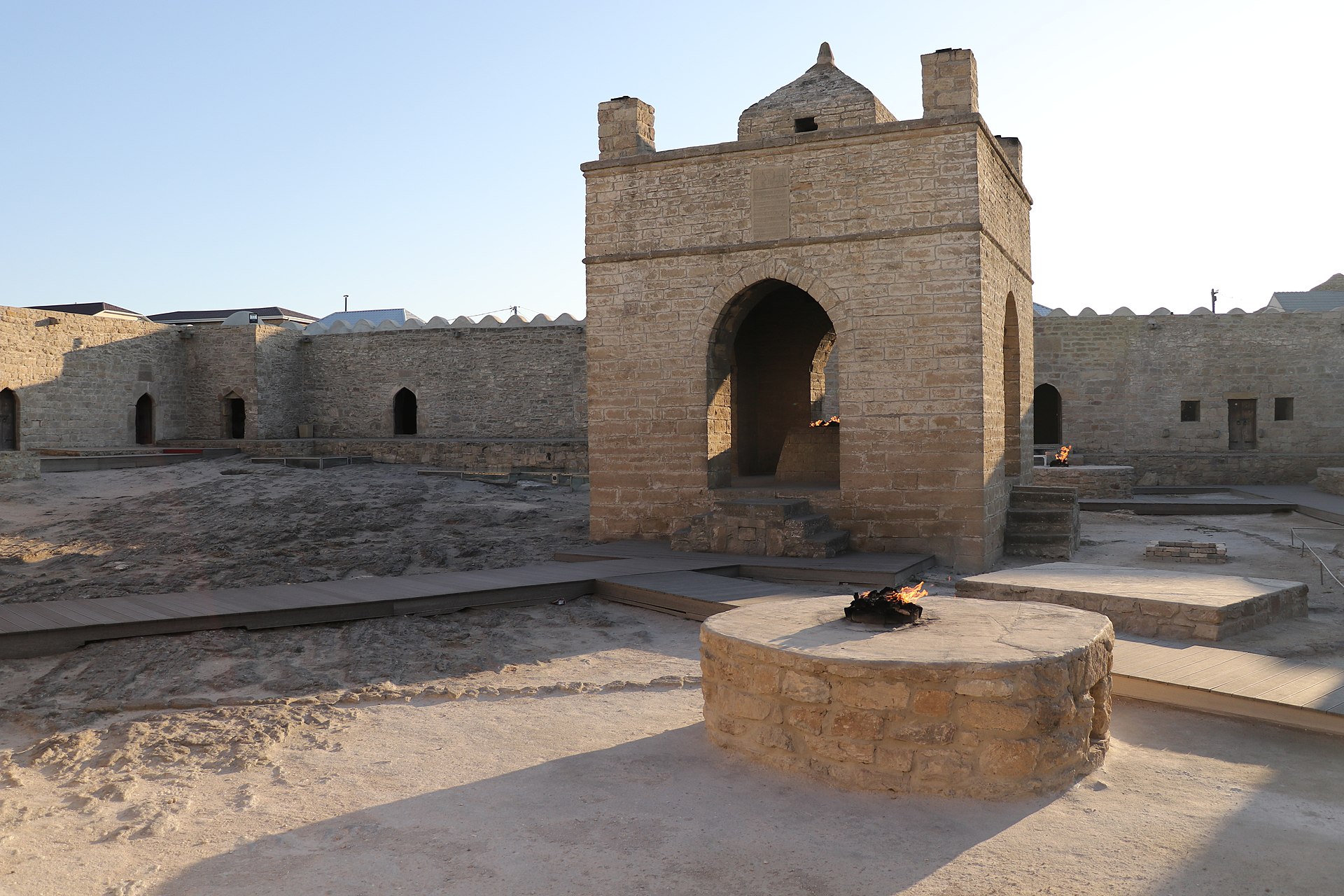
If you were to visit Baku in Azerbaijan, you might come across the Ateshgah, which literally translates to ‘House of Fire’. The temple holds at its centre a sacred flame, which was said to have burned eternally – until the 20th century. Now, the flame is kept alive with a gas line. However, if one were to look closely, one would find inscriptions written in Sanskrit and Gurmukhi, not to mention a Trishul placed at the top of the altar.
In the first line of the temple inscriptions is a dedication to Lord Ganesh, after which is a line venerating the holy fire, also known as Jwalaji or Jwalamukhi, followed by a version of the same in Persian. Besides this, there is also a separate inscription in Sanskrit dedicated to Lord Shiva.
What is the story behind this apparently Indian temple in Azerbaijan?
The temple was built in the mid-1700s, at a time when Zoroastrianism was quite popular. Historians believe that this temple served multiple religions, including Hindus and Sikhs, who most likely came to Baku as traders.
In The First World War Adventures of Nariman Karkaria – the only known memoir of the First World War written by an Indian – Karkaria too, explored the temple at Baku, and tells an interesting story of his experience there. According to his accounts garnered from the locals, the Jwalamukhi fire was tended to by a succession of Hindu priests until 1866, when the priest at the time was murdered by a Turkish man, who desired to rob the temple of the riches it had accumulated. Not long after this incident, powerful nations converged on Baku upon the discovery of vast oil reserves. The Jwalamukhi flame went out, and the temple was abandoned.
Today, the flame in Baku is alight once more, fuelled by a steady gas line, and a smaller version of the Jwalamukhi exists in Himachal Pradesh, a flame dutifully kept alive, that has now become a key pilgrimage site.
As for the Baku temple, it remains one of many remnants of India’s influence around the world, which also include the origins of Christmas, unicorns and more.
Works Cited
Karkaria, Nariman. The First World War Adventures Of Nariman Karkaria. Translated by Murali Ranganathan. Gurgaon: HarperCollins. 2022. Print.
“The Jwalaji Temple” Travel The Mountains. April 1st, 2018. Web. < https://travelthehimalayas.com/kiki/2018/4/1/the-jawalaji-temple-in-europe > as seen on June 20th, 2022.

The writing was really good and the way you tried to potray the article was something the made me want to read more. the article has a factor that makes the reader feel attached while reading.
This is awesome info 😊🙌